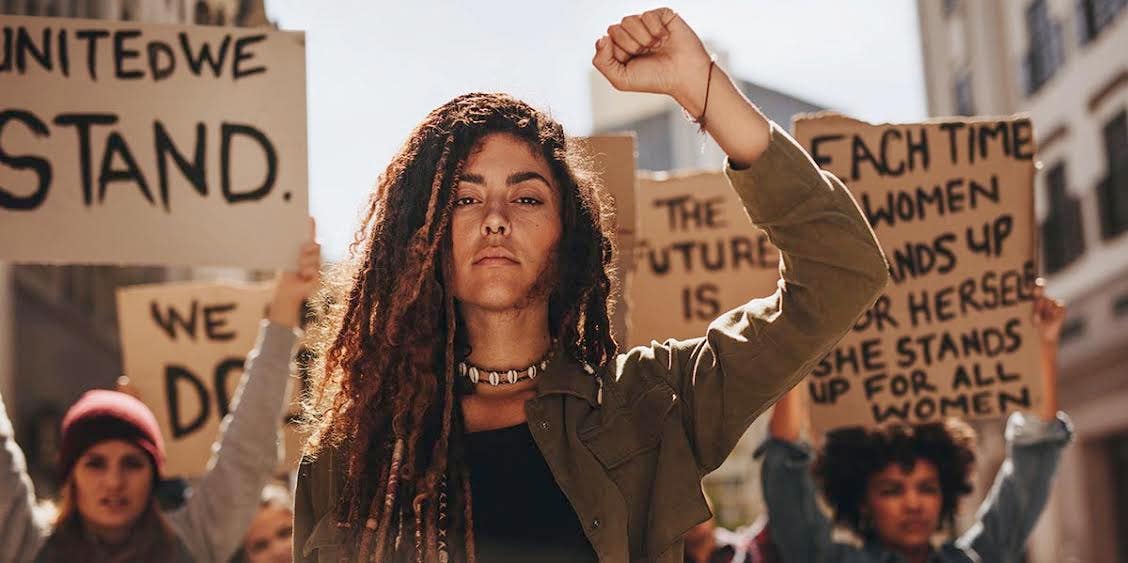How To Protest Safely During A Pandemic
There are ways to mitigate racism and the risk of coronavirus transmission at the same time.
 Jacob Lund / Shutterstock
Jacob Lund / Shutterstock The murder of George Floyd in Minneapolis last Monday has reignited public outrage about police brutality and the systemic racism that has existed for centuries in America.
While we have been protecting ourselves from coronavirus by staying indoors, a much longer-standing issue has continued to spread throughout society.
George Floyd’s murder, at the hands of 4 police officers, highlights the fact that racism rages on and permeates even the forces who are supposed to protect peace and justice. In the course of history, racism has claimed more lives than coronavirus.
The protests that have swept through the nation and the globe prove that dismantling an unjust system that oppresses black people cannot wait for a pandemic to pass.
However, the unique timing of this horrifying murder has brought unease among health experts.
Many fear these protests will lead to a rise in COVID-19 cases as people who were previously quarantined take to the streets to make a stand against racism. Protesting now poses a particular kind of health risk, especially for Black communities who have already been disproportionately affected by coronavirus.
Pandemic or not, these protests are a matter of life or death for communities targeted by police brutality. Prioritizing the health of others and yourself while protesting is the best way we can seek to stamp out both racism and the coronavirus.
Here's how to protest safely during coronavirus.
Take these steps to keep yourself an other safe, especially while attending Black Lives Matter protests.
1. Wear a mask.
Masks remain one of the most effective ways to stop the spread of coronavirus.
Whether you’re asymptomatic or come into contact with someone else who is carrying the virus, blocking off viral droplets that are transported through coughs or sneezes, will protect yourself and others. Keep your mouth and nose covered at all times, and avoid touching the outside of your mask at all costs.
Wear, clean and reuse your masks. You should also consider wearing goggles and cover your skin as much as possible to protect yourself from tear gas, which is designed to attach to moisture on your skin. That means hair grease, saliva, tears, or even makeup.
2. Carry water with you.
Water is the best cure for tear gas, despite popular reliance on milk. Tear gas is designed to make you feel pain and often causes people to cough and splutter, which is detrimental when trying to reduce the spread of coronavirus.
Flushing water out of your eyes and airways by rinsing your face with water will rapidly and effectively reduce the effects of tear gas. Stay stocked up on water as police have been using tear gas at even the most peaceful of protests.
3. Maintain social distance.
The magnitude of these protests makes it hard to keep 6 feet away from others, but it’s important to try and keep your distance as much as possible.
Mass gatherings in the era of COVID-19 are a source of concern for health officials, but it’s not impossible to minimize contact while protesting.
Stick with who you came with and show solidarity with other protesters without invading their personal space. Spread out while marching; occupying as much space as possible only serves to benefit the cause.
4. Don’t touch your face.
By now we‘ve all heard how to avoid contracting coronavirus, but this is one detail to remind yourself of as you protest.
Because you’ll be out in public and probably touching different surfaces, it’s important to be stocked up on hand sanitizer to kill germs. Sanitize your hands and belongings periodically throughout the day and avoid touching your face, as this transports the virus into your nose and mouth.
Even if you’re exposed to tear gas, resist the urge to rub your eyes and skin. Some experts believe this makes the effects of tear gas even worse.
5. Be careful about eating.
Try to avoid removing your mask to eat while in public.
Consider filling yourself up on food and water before going out on the protest trail. If you must eat in public, do so away from passersby who could be carrying the virus.
Sanitize your hands and food packaging before consuming anything, and dispose of all wrappings properly. If possible, have a second, clean mask to wear after you’ve touched and contaminated your first one.
6. Stay home if you or someone you know is at risk.
Before you expose yourself to masses of people, consider your health and that of the people you have regular contact with.
If you or someone close to you is particularly vulnerable to the virus, consider staying at home. Equally, if you or someone from your household is feeling unwell, do not put others at risk by protesting in public.
There are plenty of ways you can support this cause without harming your own health or that of others.
Alice Kelly is a writer with a passion for lifestyle, entertainment, and trending topics.
